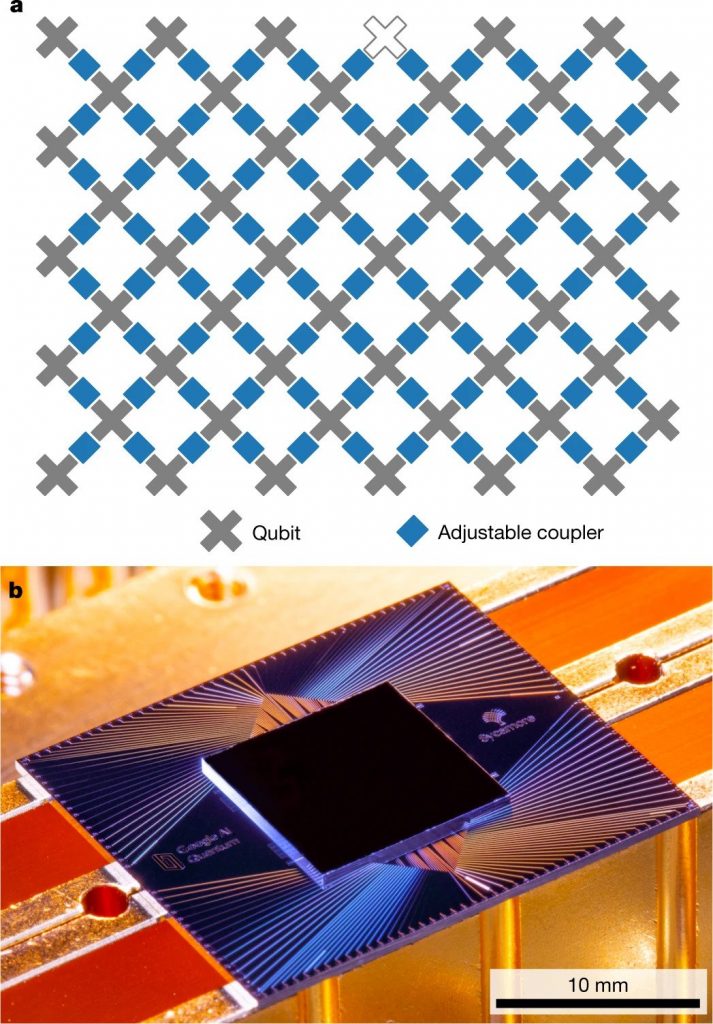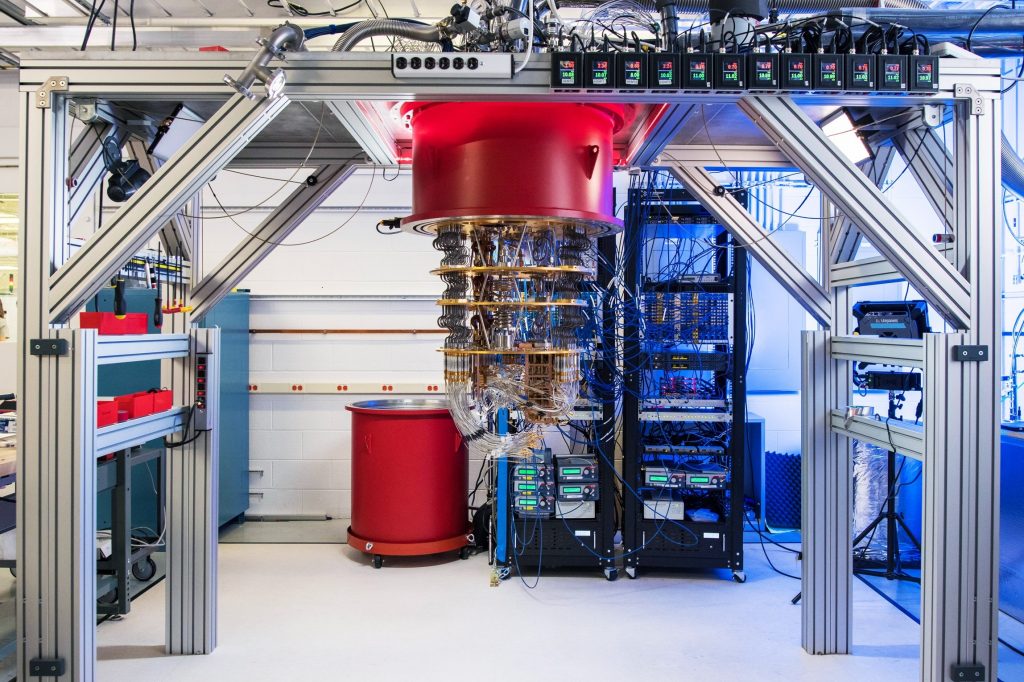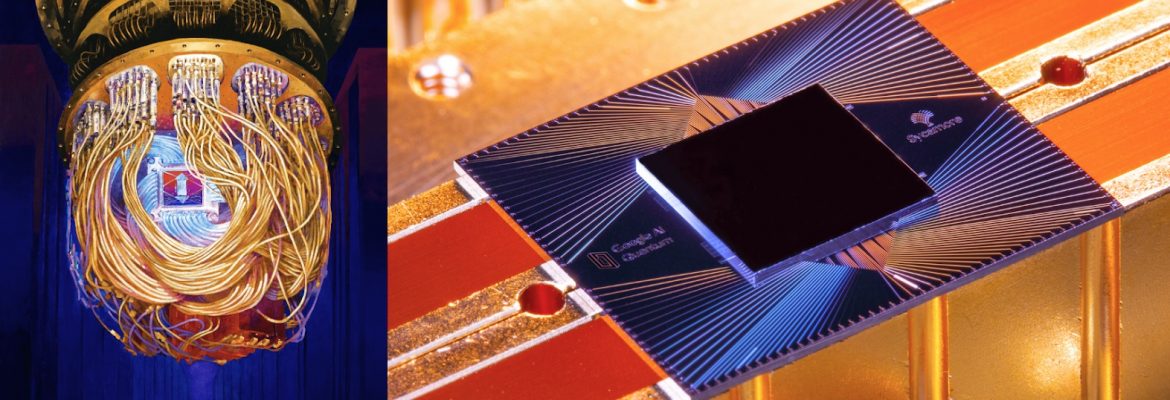Quantum Computing Is Almost Here!
The giant technology company Google is boasting that it has reached quantum superiority and introduces the Sycamore chip, but the truth is far from vision and will continue for many years until a quantum computer becomes useful and commercially accessible. In any case, the Google demo is a respectable physical experiment worthy of evaluation.

Last Wednesday in Santa Barbara, California, it was very hot outside, but in the tech giant Google’s computer labs temperatures were almost below zero. Three cylinders loaded with pipes and cables were hung in the room, not something to be ignored, but rather superconducting quantum processors, not long before we entered the room, at a temperature just above zero.

Courtesy of Google
The distinguished journal Nature published a paper reviewed by scientists and researchers with a description of the chip inside, called Sycamore. An experiment that ended successfully on a complicated math problem estimated at ten-thousand-year-olds was successfully completed, but despite striking results, IBM is skeptical of Google’s results, noting that it is a significant milestone but is far from being quantum gain for decades.
“It’s not a technological milestone, it’s a scientific landmark,” says David Poulin, codirector of the quantum information program at the Canadian Institute for Advanced Research, and a professor at Université de Sherbrooke in Quebec.
Gaining quantum superiority that can tell powerful computational capabilities stems from the number of cubes. The cubes encode data into quantum mechanical properties that exist in reality in a way that is invisible. The cubites are able to make complex calculations by manipulating digital data particles, unlike ordinary classical computers, because using a third state called superposition, which means that both modes 1 and 0 exist simultaneously.
The Google Sycamore chip contains 54 cubits. By comparison, Intel and IBM introduced similar-sized processors and also built on superconducting chips. Last Wednesday, a roadmap was presented that offered a future outline for building quantum processors with full error checking as soon as it had processors with a million or more bit files. The problem is that to enable error corrections, the quibits need to be much more reliable and high-quality than they are today. Google’s quantum hardware head John Martinis said the quibits needed error rates of 1 in 1,000 to make full error corrections. Meanwhile, the situation is about the error rate on Google’s Sycamore chip five times higher than the other competitors.

Courtesy of Amy Lombard
“I feel we know how to increase to hundreds and maybe thousands of cubits,” Martinis said. “Scaling up to a million, it’s really hard.” Last Wednesday, members of the Google quantum lab research team evaluated that it would take about a decade to have a quantum computer with a relatively low number of errors.
Google is currently investigating the $1 million question, can we use quantum computers in the near term even without error corrections? Google’s quantum researchers said they were discussing with the company’s top security experts about conducting a Sycamore chip quantum primer to generate random numbers for encryption keys.
Google reports that it is working to enable access to its cloud quantum gravity, similar to the service offered by IBM, whose key partners are J.P. Morgan, Rigetti and the pharmaceutical manufacturer Merck.
Read more on this topic>>
https://www.nature.com/articles/d41586-019-02935-4
https://www.nytimes.com/2019/10/25/technology/google-quantum.html
https://ai.google/research/teams/applied-science/quantum/
https://ai.googleblog.com/2019/10/quantum-supremacy-using-programmable.html
https://spectrum.ieee.org/tech-talk/computing/hardware/googles-quantum-tech-milestone-excites-scientists-and-spurs-rivals
https://www.wired.com/story/quantum-computing-here-but-not-really/
https://www.wired.com/story/wired-guide-to-quantum-computing/


